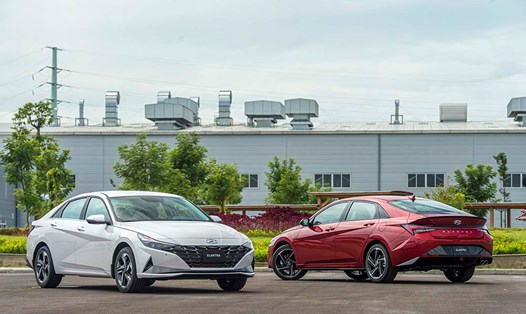Although the famous automaker Hyundai has not adjusted its electric vehicle sales target, the company is still determined to launch a series of new electric vehicles in the coming years.
Accordingly, promoting the production of hybrid and electric vehicles with expanded scope includes the use of compact gasoline engines to charge batteries during operation, in order to cope with the declining demand for electric vehicles globally.
According to the Hyundai Way plan, the Korean automaker wants to increase total sales from 4.21 million vehicles in 2023 to 5.55 million vehicles in 2030. This figure includes the goal of selling 2 million electric vehicles, by Hyundai launching 21 all-electric models by the end of the decade, from affordable models to luxury and high-performance models.
It is known that to achieve this goal, Hyundai will launch EREV models - an extended range powertrain, including: A battery pack, an electric powertrain and a small internal combustion engine that acts as a power source.
A Hyundai representative said that the company's EREV will provide an operating range of more than 900km (560 miles), which will help reduce dependence on the charging network compared to the EV. On the other hand, EREVs will also be more affordable than EVs because they will use smaller batteries.
Hyundai wants to sell more than 80,000 EREVs in North America, starting with mid-size SUVs from Hyundai and Genesis, along with focusing on the compact car segment in China with 30,000 other EREVs. The company's mass production is expected to begin in North America and China by the end of 2026, with sales expected to begin in 2027.
In addition, Hyundai will double the hybrid line from 7 to 14 models, covering more segments with the support of Genesis. The company expects global hybrid vehicle sales to reach 1.33 million units by 2028, up more than 40% from the previous plan.
Starting from January 2025, Hyundai will introduce the TMED-II hybrid system, the next generation of the models produced by the company. Accordingly, this upgraded system will bring improved performance and higher fuel efficiency than the previous generation. At the same time, it also benefits from EV technologies such as smart regenerative brakes and V2L charging.
In addition, Hyundai will also invest in different battery technologies. By 2030, the company wants to use performance-based NCM (niken-coban-manganese) batteries, low-cost LFP (lithium- iron-phosphate) batteries and an affordable NCM battery to develop for large-volume models.
Previously, the company had planned to continue the process of switching to software as the focus, with the development of SDV (Social-based vehicles), including: SDV roadmap vehicles expected to launch in the second half of 2026; new "mobile businesses" using AI and enhancing cybersecurity. This is part of the Hyundai Way strategy.
In fact, Huyndai is also researching a new digital cockpit and next-generation entertainment information systems based on the Android Auto operating system. This system will be applied to mass-produced cars starting from the first half of 2026.
Not only that, the Hyundai brand also aims to achieve the ability to drive at level 4 or higher and become a technology supplier.











